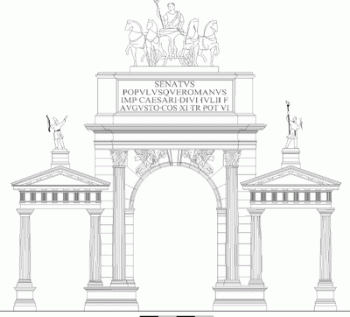American Journal of Archaeology | The Journal of the Archaeological Institute of America
You are here
The Parthians in Augustan Rome
January 2005 (109.1)
The Parthians in Augustan Rome
This article considers the conception and commemoration of foreigners, especially Parthians, as diagrammed in the triumphal imagery of Augustan Rome. The interaction of Trojan and Parthian iconography during the Augustan period is analyzed, as is the new attitude toward the representation of foreigners that developed in Rome during the early Empire, when barbarians were presented as contributors to peace rather than its opponents. The focus is the general topographical context of the Parthian Arch on the east side of the Roman Forum, but the article also includes new iconographic readings of the Primaporta cuirass, the Ara Pacis, the Basilica Aemilia Parthians, and the altar from the Vicus Sandaliarius, as well as triumphal monuments in Athens, Corinth, and Antioch-in-Pisidia. The cuirassed figure facing the Parthian on the Primaporta breastplate is identified as Roma, and the Eastern woman and child on the south frieze of the Ara Pacis are linked to the Parthian royal family resident in Rome during the Augustan period. A triumphal arch celebrating Gaius Caesar’s success over the Parthians is reconstructed between the Basilica Aemilia and the temple of Divus Julius, and its decoration was clearly designed to complement that of the adjacent Parthian Arch and the Temple of the Dioscuri. The imagery on the eastern side of the Roman Forum can be read as a program outlining the Julian dynasty’s involvement with the Parthians, and suggesting that the East had finally been domesticated.
The Parthians in Augustan Rome
By Charles Brian Rose
American Journal of Archaeology Vol. 109, No. 1 (January 2005), pp. 21–75
DOI: 10.3764/aja.109.1.21
© 2005 Archaeological Institute of America


